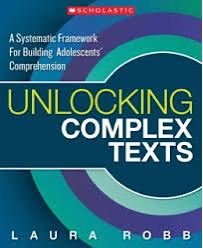Our #1 Reading Problem: Persistent Inequalities

In early March I spoke about reading in the era of the Common Core to a group of administrators in an urban US school district. During my visit, I had lunch one day with English teachers at a school named after President Obama to discuss the teaching of reading.
We met in their library, a facility both uninviting and unused. With no librarian, neither teachers nor students can check out the few available books. I learned that most of the books had been ordered by a third party, not by staff who would have made wiser fiction and nonfiction selections.
During our conversations, I also discovered that there are few books in teachers’ classroom libraries — ten to fifteen is typical. As a result, the largely African American and Latino student population of this school does not have access to high quality texts written by multi-ethnic authors about diverse characters and topics.
Because of the lack of resources for students, the school has far too many developing readers — learners who lack the skill to unpack meaning from complex, grade level materials. I was told that many students are reading three to five or more years below grade level. I believe a major cause is the lack of access to motivating and engaging print and e-books.
In addition, English classes that aren’t special education have 35 to 45 students packed into classrooms. Teachers are sad, worried and deeply concerned. Sad because they know their students can’t meet the requirements of the Common Core. Worried because they recognize that based on students’ test scores, they will receive poor evaluations. And they’re deeply concerned about sending students on to high school without the necessary skills to read, write, think, and thrive.
Who cares about these kids?
When I returned to my hotel room, I wrote to the governor of the state and to President Barack Obama. In both letters I mentioned that, in 2013 alone, states spent 3.5 billion dollars to develop tests for the Common Core – leaving little available funding to actually improve schools.
The teachers I met with that day gave up their lunch to learn; they are hungry for professional opportunities to grow. They desperately want wonderful books that can engage and motivate their students to learn how to read complex texts and find pleasure in reading. They care deeply about their students.

So what do the leaders in charge say? The Governor has not yet replied to my letter of concern, even though I requested an answer.
I naively believed that since the school I visited was named after President Obama, my letter might catch the attention of a knowledgeable person assigned to sift out such correspondence. By including my website and the fact that I’ve written 20 books on reading and writing and have over 40 years of classroom experience, I felt hopeful that I would receive a thoughtful response.
I was mistaken.
I received a canned reply “from” President Barack Obama—a reply that never even addressed the situation I discussed in my letter—a reply filled with promises like “investing in our teachers” and the President’s agenda to “fund our schools, revamp our classrooms, uphold high standards, train the best educators, and stand behind them.” Achieving better schools, the letter said, “means providing pathways to excellence that allow teachers to practice their craft with creativity and passion.”
It was discouraging to receive this platitude-filled response in light of the plight of high poverty schools throughout our nation.
There’s something very wrong

There’s something very wrong with our priorities when states give over 3.5 billion dollars to companies designing the Common Core tests (and the test prep programs to go with them) and then don’t have the funds to lift children out of poverty through education that knows how to engage, inspire and empower students to learn .
Perhaps the administration’s vision needs to move beyond educational initiatives that focus on testing, competition, and computers to tackling these issues:
► attracting to and keeping the best in the teaching profession;
► funding ongoing professional study that prepares teachers to effectively integrate technology into instruction;
► providing the professional books and research on how children learn — and the time teachers need to explore and apply best practices with colleagues.
But it’s the children themselves who need to be at the center of educational initiatives. We must insure that students from diverse economic and cultural groups also have access to the finest books and reading materials, attend schools with inviting central and classroom libraries, and are not packed into classrooms where the sheer numbers exceed any teacher’s ability to support all learners.
How can we move beyond platitudes?




































Thank you lending your voice to those who don’t really have one on a national level. No one from the government is coming to help us; we educators have to help ourselves. If we have administrators who understand the real problems, and teachers who, regardless of years of experience, are still vested in making a difference for kids we have a shot. We are the passionate ones who have have to create the learning environments where kids can thrive. All hands on deck – all teachers, paras, administrators, specialists, special teachers everyone – community members where ever you can find them. This is urgent. We talk about urgency but your post is not just talking about it but is screaming it like someone yelling – FIRE! Twitter s/b required like have a teaching certificate. We have to do this work together. Thank you for your leadership!
How I appreciate your call to action! It is crucial that we try to implement change. The 12th grade NAEP scores are in and nationally we are flat in reading and math. Yet, we persist with the same test, test, test strategy. Now with teacher evaluation tied to students’ test scores, the tests will become more almighty!
We need outstanding, ongoing professional development, reasonable class size, and the finest materials for students. The focus of teaching and learning should be to use facts to think, problem solve, and innovate. Yet, students still have to memorize large amounts of information that are so easy to access online.
Working together is essential if we are to create meaningful change!
Laura Robb
Well said. That is a surprising statistic on the monies spent on the Common Core and testing. It is sad to see our students deprived of a love for books because they lack good reading material and teachers are so focused on testing.